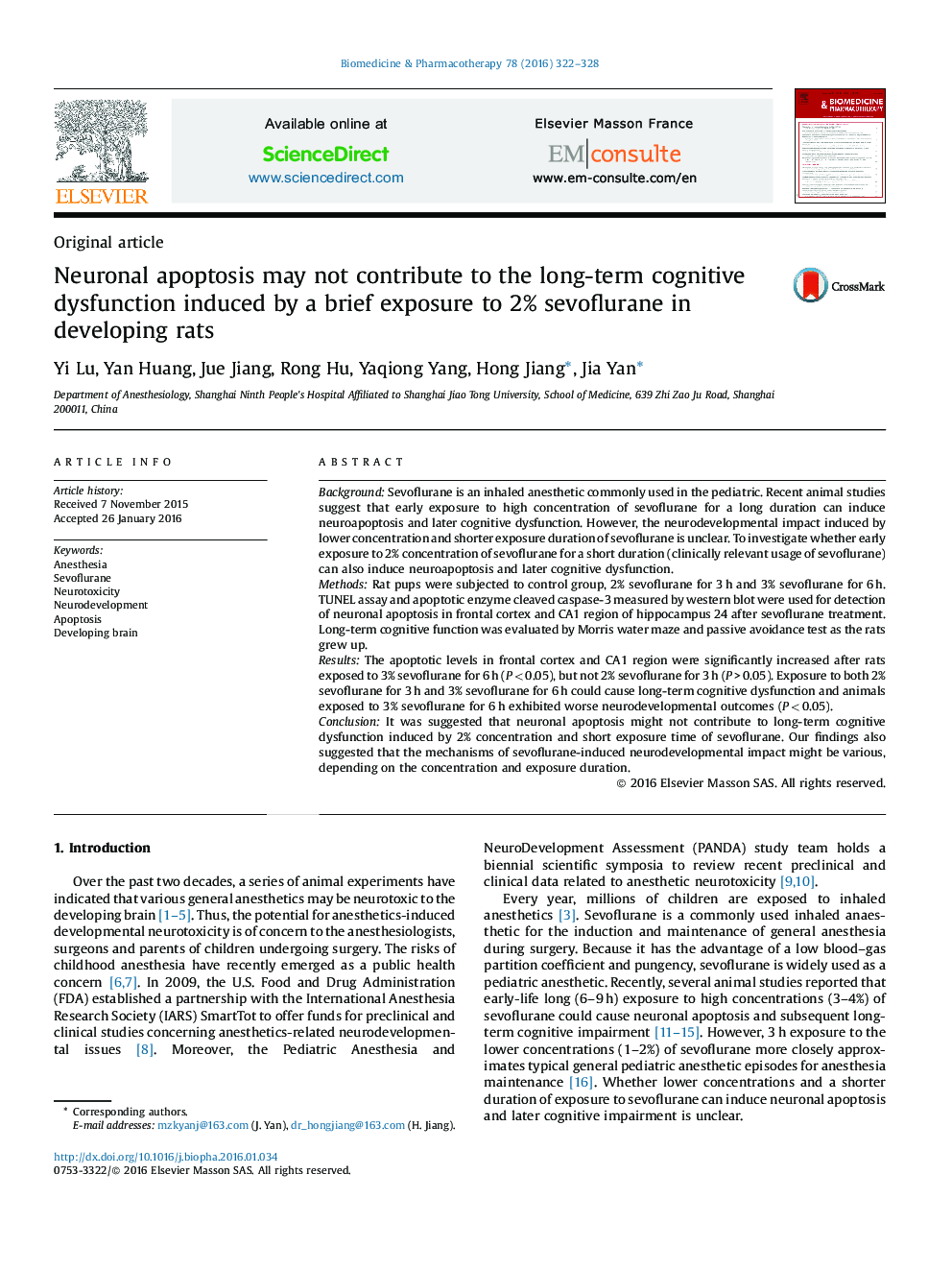| Article ID | Journal | Published Year | Pages | File Type |
|---|---|---|---|---|
| 2523932 | Biomedicine & Pharmacotherapy | 2016 | 7 Pages |
BackgroundSevoflurane is an inhaled anesthetic commonly used in the pediatric. Recent animal studies suggest that early exposure to high concentration of sevoflurane for a long duration can induce neuroapoptosis and later cognitive dysfunction. However, the neurodevelopmental impact induced by lower concentration and shorter exposure duration of sevoflurane is unclear. To investigate whether early exposure to 2% concentration of sevoflurane for a short duration (clinically relevant usage of sevoflurane) can also induce neuroapoptosis and later cognitive dysfunction.MethodsRat pups were subjected to control group, 2% sevoflurane for 3 h and 3% sevoflurane for 6 h. TUNEL assay and apoptotic enzyme cleaved caspase-3 measured by western blot were used for detection of neuronal apoptosis in frontal cortex and CA1 region of hippocampus 24 after sevoflurane treatment. Long-term cognitive function was evaluated by Morris water maze and passive avoidance test as the rats grew up.ResultsThe apoptotic levels in frontal cortex and CA1 region were significantly increased after rats exposed to 3% sevoflurane for 6 h (P < 0.05), but not 2% sevoflurane for 3 h (P > 0.05). Exposure to both 2% sevoflurane for 3 h and 3% sevoflurane for 6 h could cause long-term cognitive dysfunction and animals exposed to 3% sevoflurane for 6 h exhibited worse neurodevelopmental outcomes (P < 0.05).ConclusionIt was suggested that neuronal apoptosis might not contribute to long-term cognitive dysfunction induced by 2% concentration and short exposure time of sevoflurane. Our findings also suggested that the mechanisms of sevoflurane-induced neurodevelopmental impact might be various, depending on the concentration and exposure duration.
